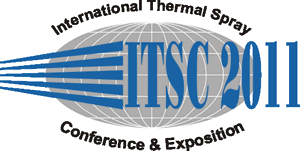
|
2845 |
|
Tuesday, September 27, 2011, Saal C2.1 4:50 PM Corrosion Protection 1 |
|
Corrosion resistance of thermally sprayed coatings and welded overlays in waste incineration environments |
|
Hanna Pokhmurska* / Institute of Composite Materials, Chemnitz University of Technology , Germany Bernhard Wielage / Institute of Material Science and Engineering, Chemnitz University of Technology, Germany Michael Schütze/ Karl-Winnacker-Institut der DECHEMA e.V, Germany Rick N. Durham/ Karl-Winnacker-Institut der DECHEMA e.V, Germany Dirk Franik/ CeWOTec gGmbH, Germany Andreas Gebert/ CeWOTec gGmbH, Germany |
|
Several model alloys with increased content (up to 30 at.-%) of protecting scale forming elements in chloride containing atmosphere were developed. High temperature corrosion resistance of some Fe-based bulk alloys as well as Fe- and Ni-based thermally sprayed coatings and welded overlays coatings were investigated under the simulated process atmosphere, corresponding to the conditions of chloride containing medium of waste power plants. Arc spraying and HVOF spraying methods as well as PTA overlay welding method were used to produce coatings of corresponding compositions. After an exposure to the simulated process atmosphere (500°C, 100 hours, 75N2-20O2-4.9Ar-0.1Cl2 in a horizontal, resistance wound laboratory furnace), the samples were examined with electron probe micro-analysis (EPMA) to ascertain the extent of corrosion attack throughout the coating and the coating/metal substrate and to exam the scale formation. It was shown that the protection behaviour of overlay welds depends on the content of alloying elements, although the last is limited because of weldability decrease by high alloying level. At the same time high temperature corrosion resistance of thermally sprayed coatings is determined by their porosity, which can be varied in a very broad range depending on the applied spray deposition method. Thus, all investigated arc sprayed coatings needed an additional post-treatment. Two of those methods were applied, pre-oxidation treatment in the air and sealing with commercial high temperature sealant, to prevent a penetration of aggressive environment to the substrate. Newly developed iron-based coatings with high aluminium content (up to 20 wt- %) sprayed with HVOF spraying with powders obtained by means of high energy ball milling demonstrate high corrosion resistance under test conditions. The last ones as well as post-treated arc sprayed coatings have been classificated for further investigations in higher temperatures and artificial fuel ash. |